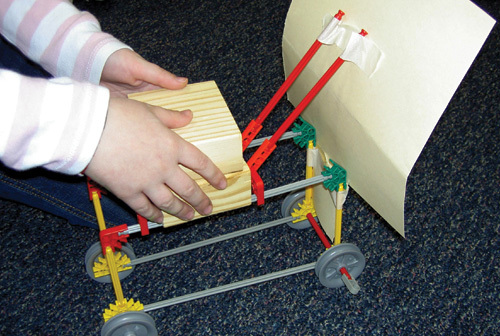Benjamin Franklin. Eli Whitney. Robert Fulton. Thomas Edison. Orville and Wilbur Wright. Alexander Graham Bell. George Washington Carver. Henry Ford. Jonas Salk. Charles Drew. Virginia Apgar. Steve Jobs. Bill Gates. Temple Grandin.
From its earliest days, innovation has been the lifeblood of the American economy. When Americans face problems, they innovate to find solutions.
In education, we face serious problems, of course, and innovation should be the answer. In recent years, the federal government has aided the development, evaluation, and dissemination of solutions to persistent education problems, and real progress is being made in identifying effective reading, math, science, and other programs for elementary and secondary schools. As argued in a recent paper by Martin West, this competitive funding has been essential in building up a diverse and rigorously evaluated set of programs ready to make a difference in U.S. education.
In order to further accelerate the momentum of innovation in education, some senators and congressmen are proposing a new approach, based on the successful Small Business Innovation Research (SBIR) program, which funds innovation and evaluation in 11 different government agencies. The new initiative is called Social Spending Innovation Research (SSIR). The idea of SSIR is to set aside a tiny proportion of funding in each major area of government education funding (except Title I) for the purpose of creating, evaluating, and disseminating proven approaches in that area of funding. For example, money from IDEA (special education) might support innovations in special education. The funding in SSIR would be spent on three categories of research and development:
- Development and piloting of promising innovations;
- Rigorous evaluation of existing programs; and
- Large-scale evaluation and replication of proven programs.
The three-tier structure of SSIR sounds a lot like Investing in Innovation (i3), but there are several important differences worth noting.
- Any organization can participate. i3 is limited to non-profits.
- Because the funding comes from programs that provide direct services to children, there might be a greater likelihood that proven programs will become part of practice in that area. SSIR, like SBIR, should be seen as innovation to benefit the public, not the researchers.
- Because the proportions of total funding are so small (0.5% for evaluation and 1.0% for innovation and research), the funding for SSIR might be supported for a long time, as part and parcel of key education funding rather than as a separate and therefore vulnerable program of its own.
Innovation is how America solves problems. We need to find every way we can to help innovators solve the serious problems we face in education.

